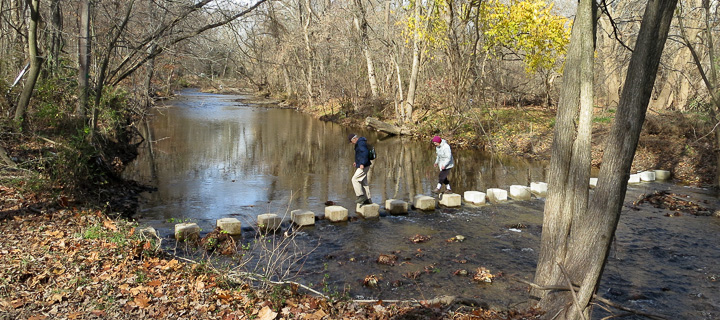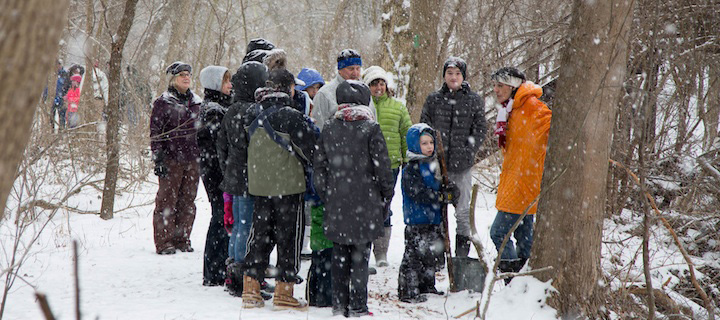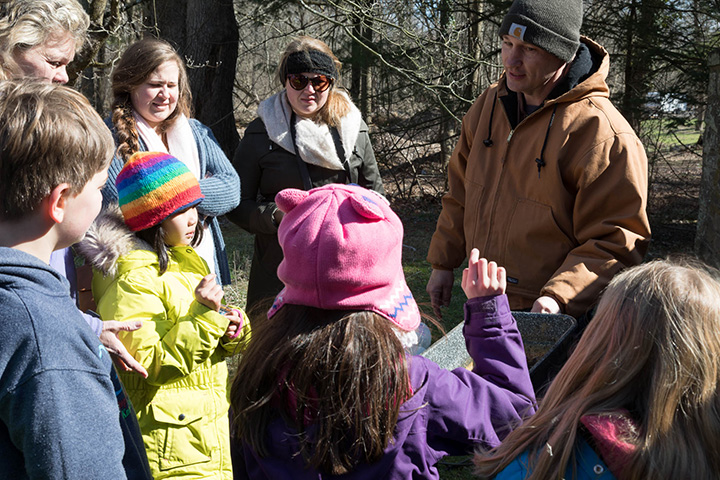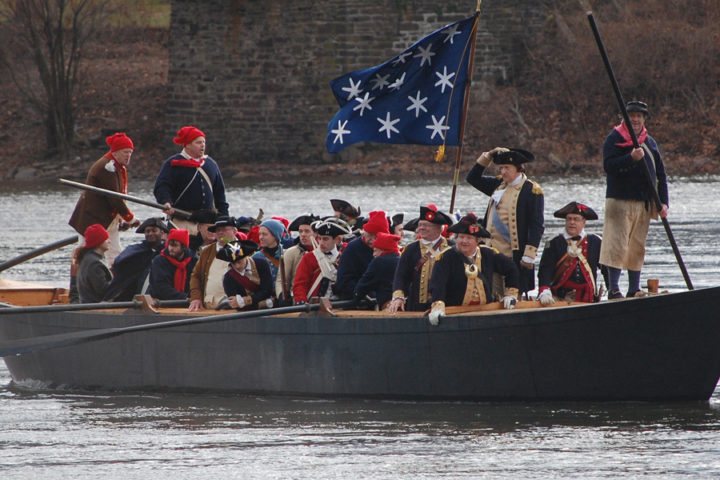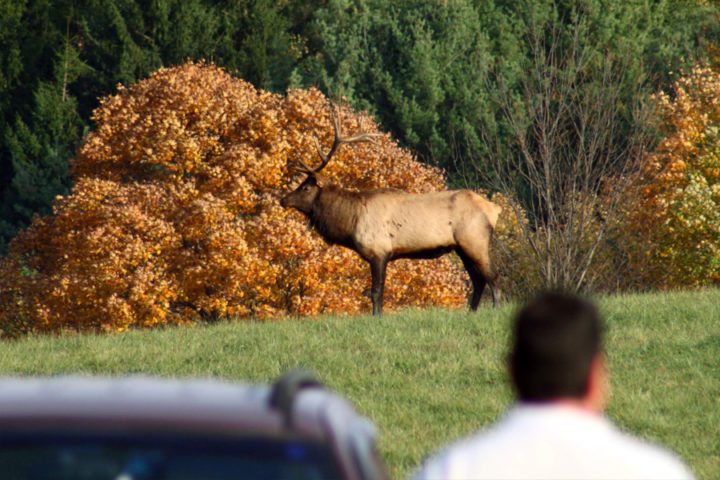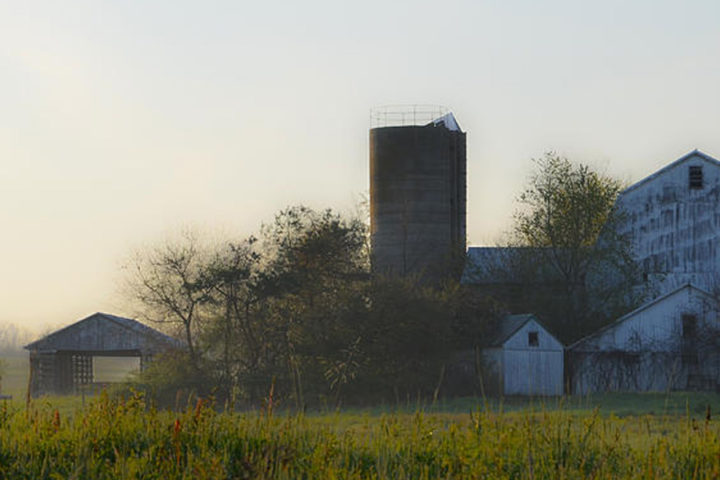One by one, the fields and farms of Ellen Lea’s childhood are disappearing. Ellen and her brothers had spent their childhood days riding horses, frolicking in fields or chasing crawfish in the Wissahickon Creek. Their great uncle’s farm was a 300-acre natural playground, not only for them but also for other children and adults who lived in the area. At that time in Montgomery County, land was still open, and people less conscious of property lines.
“We grew up with open land,” Ellen said. “It’s ingrained in us.”
Ellen’s mother, Jane O’ Neill, inherited her bachelor uncle’s farm and found herself fielding calls from developers offering big money. As she counted the new developments consuming the land around her, she began to wonder about her property’s future. Jane decided to ask her children how they felt about preserving the land.
The family’s unanimous decision was to forgo their inheritance and make a multi-million dollar gift to the community.
One by one, the fields and farms of Ellen Lea’s childhood are disappearing.
“When we were children, my mother would point out places and say, ‘this used to be a field and that one a farm,’ and we would think, ‘Oh mom you’re so old,’” Ellen said. “I find myself saying the same thing to my children but now, it’s everyday instead of once a year. It’s happening so much faster now.”
Ellen and her brothers had spent their childhood days riding horses, frolicking in fields or chasing crawfish in the Wissahickon Creek. Their great uncle’s farm was a 300-acre natural playground, not only for them but also for other children and adults who lived in the area. At that time in Montgomery County, land was still open, and people less conscious of property lines.
“We grew up with open land,” Ellen said. “It’s ingrained in us.”
Ellen’s mother, Jane O’ Neill, inherited her bachelor uncle’s farm and found herself fielding calls from developers offering big money. As she counted the new developments consuming the land around her, she began to wonder about her property’s future.
Jane decided to ask her children how they felt about preserving the land.
The family’s unanimous decision was to forgo their inheritance and make a multi-million dollar gift to the community.
The land was donated to the Wissahickon Valley Watershed Association. It is a welcome addition to the Association’s 22-mile strip of permanently protected land along the creek, aptly named the Green Ribbon Preserve.
“It’s one of those properties with memories that mean more than any amount of money that would have come from cashing out,” said Jane’s son, Jake Lea.
A Ribbon of Blue
On a map, the Wissahickon Creek is a ribbon of blue, ensconced by a ribbon of green—the Green Ribbon Preserve.
The Wissahickon Valley Watershed Association’s preserve provides open space, scenic beauty, wildlife habitat and a trail linking communities from northern Montgomery County to Philadelphia.
The preserve also protects water quality, absorbing the pollution from storm water runoff before it reaches the stream.
“I call it the Big Sponge,” said Carol DeLancey, director of special events for the Wissahickon Valley Watershed Association (WVWA).
The Wissahickon Creek starts as a trickle behind the Montgomeryville Mall. From there, it flows for 22 miles, past the homes and businesses of 253,700 people, before emptying into the Schuylkill River. Along the way, it meanders through 11 Montgomery County municipalities, several Philadelphia neighborhoods and Fairmount Park.
A drinking water intake on the Schuylkill River, just a short distance downstream from the confluence with the Wissahickon Creek, serves 300,000 people.
WVWA conserves land by buying and accepting donations of land and then maintaining it. It also buys and accepts donations of conservation easements — keeping land in private ownership but with permanent restrictions on development.
“It has been amazing,” said Phoebe Driscoll, who owns conserved land along the creek and volunteers as an Association board member. “Some parcels took us 20 years to achieve.”
While creek protection in Montgomery County is recent, creek conservation in Philadelphia dates back to the 1800s.
A watershed is all the land, which drains into a specific body of water such as a river. Sixty-four square miles of land comprise the Wissahickon Creek Watershed. All water falling on this land flows downhill into the Wissahickon or one of its tributaries. Because rainwater flows across the land, whatever happens to the land will affect the creek. Protecting the Wissahickon means protecting the land.
A City Treasure
David Bower, a Philadelphia resident and park employee, has loved the Wissahickon Creek all of his life. The Wissahickon area of Philadelphia’s 8,000-acre Fairmount Park is an urban wildlife refuge, with 40 species of mammals and 200 species of birds.
“It’s right in the heart of the city,” Bower said. “It’s not what you would expect to find in one of the top seven cities in the country.The landscape changes dramatically as the creek spills into Fairmount Park. Deep alpine gorges replace rolling hills. Rocky glens and tall cliffs provide a welcome respite from city life.
The creek was once home to a thriving resort community, where people would vacation and buy lampshades and postcards painted with scenes from the creek. Along with the inns and other tourist trade businesses, paper mills and other industries competed for space on its banks.
In the early 1860s, the Fairmount Park Commission and the city of Philadelphia decided that industry was damaging water quality and the scenic quality of the creek. Then as now, the creek contributed much of the city’s drinking water.
The Commission ordered dozens of industrial facilities torn down, as well as many inns and restaurants. The City acquired the land for the park to protect the drinking water supply.
The one remaining resort structure is the Valley Green Inn, a historical landmark owned by the charitable Friends of the Wissahickon (and leased to a restaurateur).
Water Doesn’t Recognize Municipal Lines
In the 1800s, conserving Philadelphia County lands was sufficient to protect the creek. However, as development pushed outward from the city and into Montgomery County in the mid-1900s, the upper portions of the creek begged for attention.
The Wissahickon Valley Watershed Association took the lead and started to protect Montgomery County lands in earnest about a quarter century ago. It has now protected more than a 1,000 acres, the equivalent of 760 football fields.
“There’s no question that the wooded areas on both sides of the creek would have been developed and water quality damaged had we not conserved them,” said David Froehlich, the Association’s executive director.
Not Quite Finished
About 140 years after the Fairmount Park Commission began preserving land along the creek, WVWA is looking forward to the completion of the Green Ribbon Preserve. Through the efforts of government as well as charitable organizations like WVWA, most of the natural land bordering the Creek is protected. Only a dozen or so acres need to be protected to complete the Preserve.
However, this is not the end. The Green Ribbon Preserve helps protect the Wissahickon’s water quality, but much more land drains into and affects the Wissahickon. WVWA will continue its creek protection efforts by acquiring land and conservation easements throughout the watershed and helping landowners to consider the impact of their actions on the land and water.
22 Miles of Open Space
On a chilly October morning—7 a.m. on a Saturday—David Bower was lured from a cozy warm bed to take a 21-mile walk. He joined 300 people for an outing along the Wissahickon.
“The creek means a lot to me,” Bower said. ” And I’m one of tens of thousands of people who would say they feel the same way.”
The hikers came out that crisp, sunny morning to support the conservation efforts of the WVWA.
They trekked on muddy paths, across small streams and through fields. The trail wandered through villages, ducked under gorgeous stone bridges and hugged old stonewalls. Some folks carried children, while others walked solo through the autumn-colored woods. Quite a few walked from Upper Gwynedd Township to the creek’s mouth at the Schuylkill River.
Robert Allender of North Wales has attended the WVWA Walkathon every year for seven years. “The trail is the most spectacular, open space in the area,” Allender said. “It has woods and streams and it’s so close to home.”


